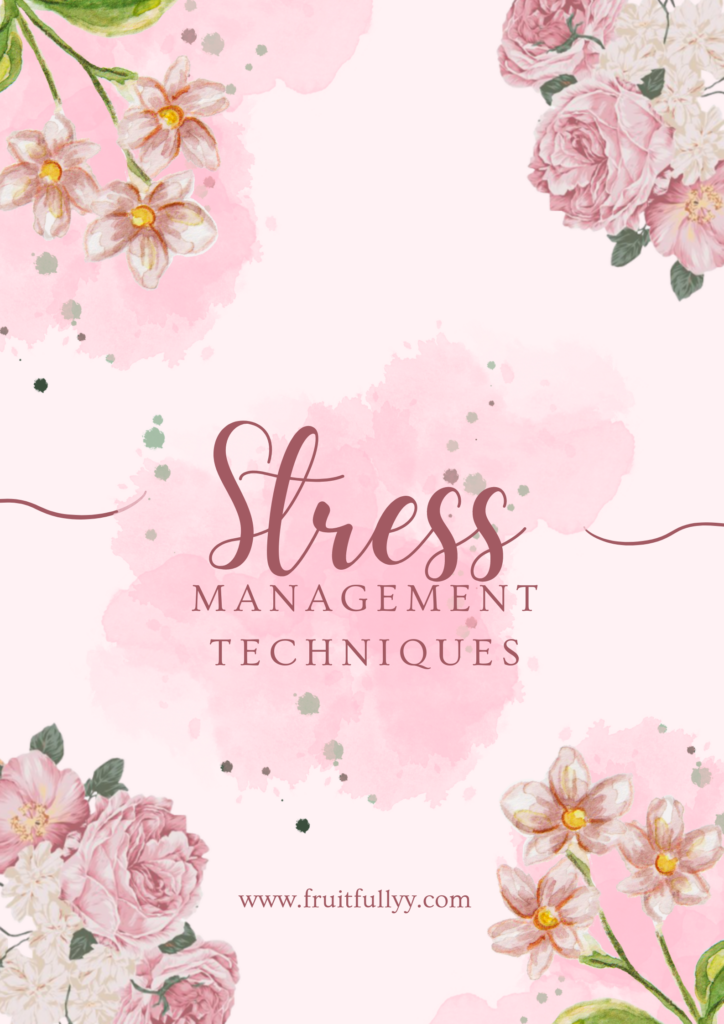
In today’s busy world, many women find themselves juggling multiple responsibilities—from work and career aspirations to family obligations, personal health, and social commitments. It’s no wonder stress often becomes an unwelcome part of daily life. While managing everything on your plate can feel overwhelming at times, it’s important to find healthy and effective ways to cope with stress.
Here are five proven stress-management techniques that can help women achieve balance and improve their well-being while balancing work and other responsibilities.
1. Improve Your Time Management
One of the key contributors to stress for women balancing multiple responsibilities is feeling like there’s never enough time in the day. Poor time management can exacerbate feelings of overwhelm and anxiety, so improving how you allocate your time can help reduce stress and boost productivity. Learning to prioritize tasks, break larger goals into manageable steps, and delegate when possible are all essential components of effective time management.
How to improve time management:
- Start by making a to-do list and ranking tasks in order of importance.
- Break larger tasks into smaller, actionable steps.
- Set aside specific blocks of time for work, relaxation, and personal tasks, and stick to those blocks.
- Use tools like calendars, planners, or apps to help you stay organized.
By gaining control over how you manage your time, you can reduce feelings of chaos and stress, creating more room for relaxation and self-care.
2. Set Healthy Boundaries
Many women struggle with saying “no,” whether at work or in their personal lives, which can lead to burnout and stress. Setting clear and healthy boundaries is essential for protecting your time and energy. This involves being honest about what you can and cannot do, and making sure you prioritize your own well-being while managing your commitments.
How to set boundaries:
- Be clear and direct when communicating your limits.
- Don’t be afraid to delegate tasks when possible.
- Make time for self-care, even if it means saying no to extra requests.
Setting boundaries can be challenging at first, but with practice, you’ll learn to protect your mental health and prevent unnecessary stress.
3. Use Guided Journaling for Self-Reflection
Journaling is a powerful tool for managing stress, especially when done with guided prompts. Writing down your thoughts and emotions helps you process difficult feelings, gain clarity on your stressors, and discover patterns in your reactions. Guided journaling encourages you to focus on specific areas of your life, such as what’s causing stress, what you’re grateful for, or what goals you want to prioritize.
How to get started:
- Set aside 10-15 minutes each day for journaling.
- Use prompts such as “What’s one challenge I faced today, and how did I handle it?”
- Reflect on your emotions and how you can approach stressful situations differently.
If you need help getting started, Gracefullyy can guide you through personalized journaling exercises that are tailored to your current emotional state. Visit chat.fruitfullyy.com to explore how guided journaling can help you process stress more effectively.
4. Incorporate Physical Activity into Your Routine
Exercise is a natural stress reliever. Physical activity boosts endorphin levels, improves mood, and helps alleviate tension. Whether you prefer yoga, walking, or a high-intensity workout, regular exercise can help you maintain emotional balance and keep stress in check.
How to stay active:
- Find an activity you enjoy and schedule it into your daily routine.
- Start with short sessions, like a 10-minute walk, and gradually increase the time.
- Consider joining a class or exercising with friends for added motivation.
5. Take Time to Relax and Unwind
Many women get caught up in a cycle of constant doing—working, caregiving, and managing various responsibilities—without allowing time for relaxation. It’s important to make space for yourself to unwind, whether that means reading a book, taking a bath, or meditating. Regularly engaging in relaxation activities helps prevent burnout and gives your mind a break from stress.
How to incorporate relaxation:
- Schedule “me time” just like you would any other task.
- Engage in activities that bring you joy and peace.
- Practice mindfulness or relaxation exercises to recharge your energy.
The Gracefullyy chatbot offers personalized relaxation exercises and guided breathing sessions, helping you carve out those vital moments of peace amidst your busy life. You can try it out today at chat.fruitfullyy.com to receive stress-management techniques tailored just for you.
Conclusion
Balancing work and personal responsibilities can be stressful, but with the right tools and techniques, it’s possible to maintain emotional balance and well-being. By improving time management, setting healthy boundaries, using guided journaling, staying active, and making time for relaxation, you can manage stress more effectively.
If you’re looking for personalized support in your stress-management journey, don’t forget to check out Gracefullyy at chat.fruitfullyy.com. It’s designed to help women like you find balance and thrive amidst life’s challenges.



